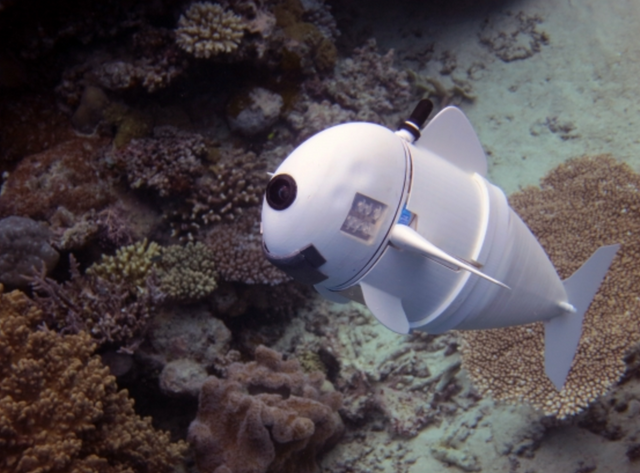These robotic fish are changing our understanding of the ocean
The best way for humans to study the oceans could be to act more like fish — or at least to appear more fish-like to other marine life.
That’s the idea behind the Soft Robotic Fish, known as SoFi, which was developed by a team at MIT. Don’t confuse the SoFi fish with SoFi, the online loan refinancing company.
The researchers published details in Science Robotics Wednesday about the process that went into designing a robot that could operate underwater and mimic the movements of fish closely enough to travel among marine life without spooking it.
“For us, this fish is magical,” Daniela Rus, director of the Computer Science and Artificial Intelligence Laboratory (CSAIL) at MIT, who led the work and co-authored the paper, told the L.A. Times. “We imagine someday it might help us uncover more mysteries from the amazing underwater world that we know so little about.”
Building a robot that functions in an aquatic setting involved quite a few challenges.
Typically robots use radio waves to communicate with controls, but those don’t travel more than a few centimeters in water. Instead, the team at MIT used audio signals to direct the robot, allowing a diver to direct the SoFi from nearly 70 feet away using a modified Super Nintendo controller.
“Acoustic signals in water can travel for much longer and with much less energy consumption,” MIT CSAIL roboticist and lead author of the paper Robert Katzschmanntold Wired.
This allows SoFi to move freely through the water, solving the problem of having to keep submerged robots tethered to boats or other vehicles.
To capture the movement of fish, the robot includes two hollow chambers of water and air that are pumped through to create the propelling tail motion.
“We were excited to see that our fish could swim side by side with real fish, and they didn’t swim away. This is quite different to when a human diver approaches,” Rus toldThe Verge.
The body of the robotic fish is built from relatively inexpensive 3D-printed parts and includes water-tight compartments to house a Linux-PC and a fish-eye camera.
In order to get the robot to float through the water at different depths and changing pressure levels, SoFi contains a cylinder that compresses and depresses air to mimic the swim bladders of real fish. Additionally, many of the air-tight compartments are filled with oil, which allows SoFi to operate in depths up to 60 feet.
src

